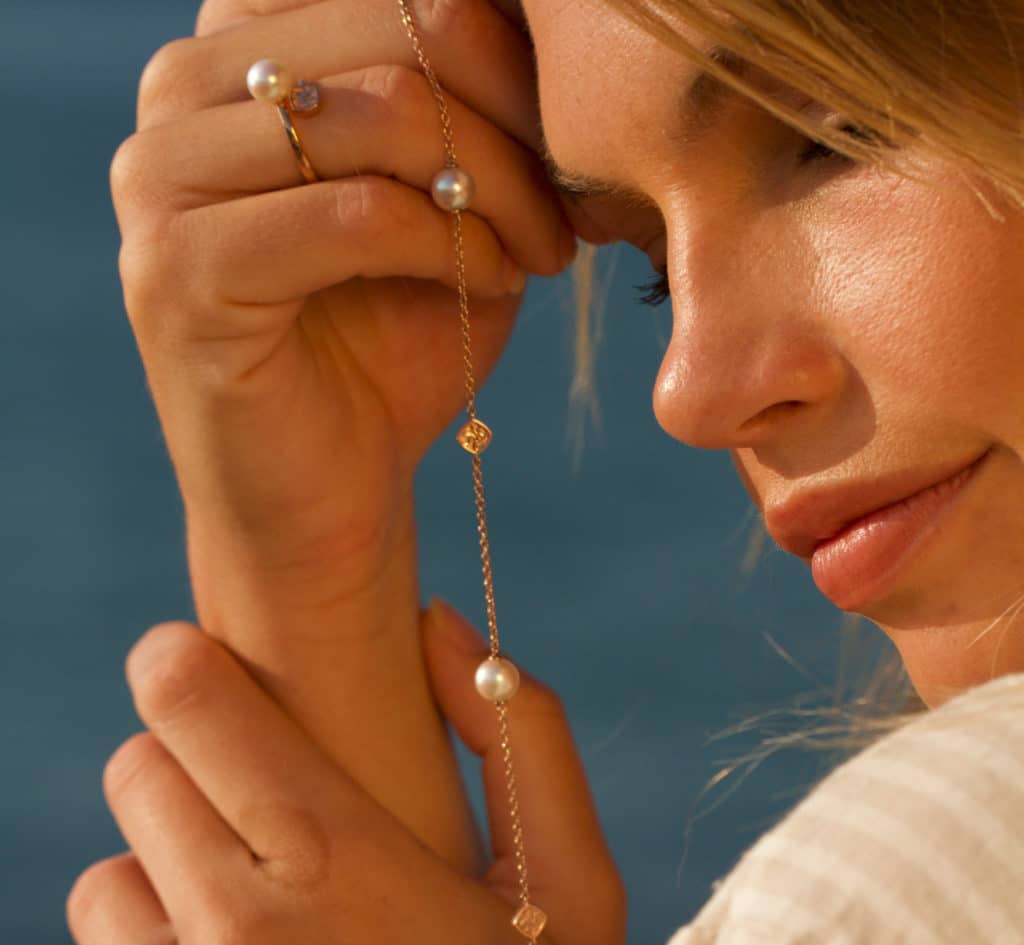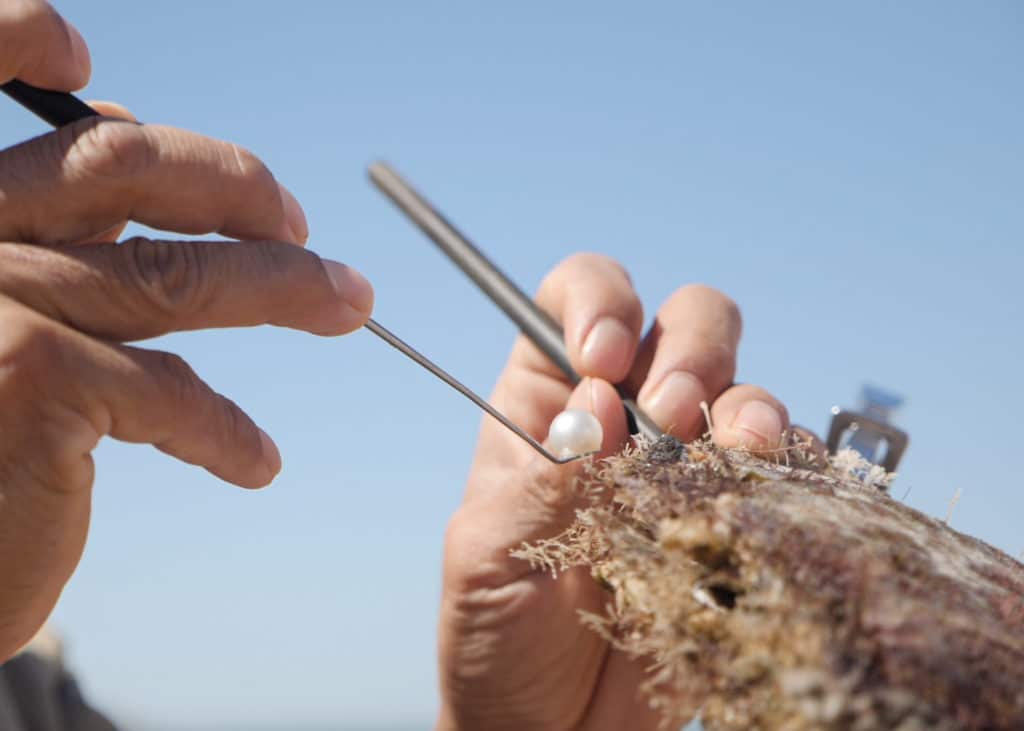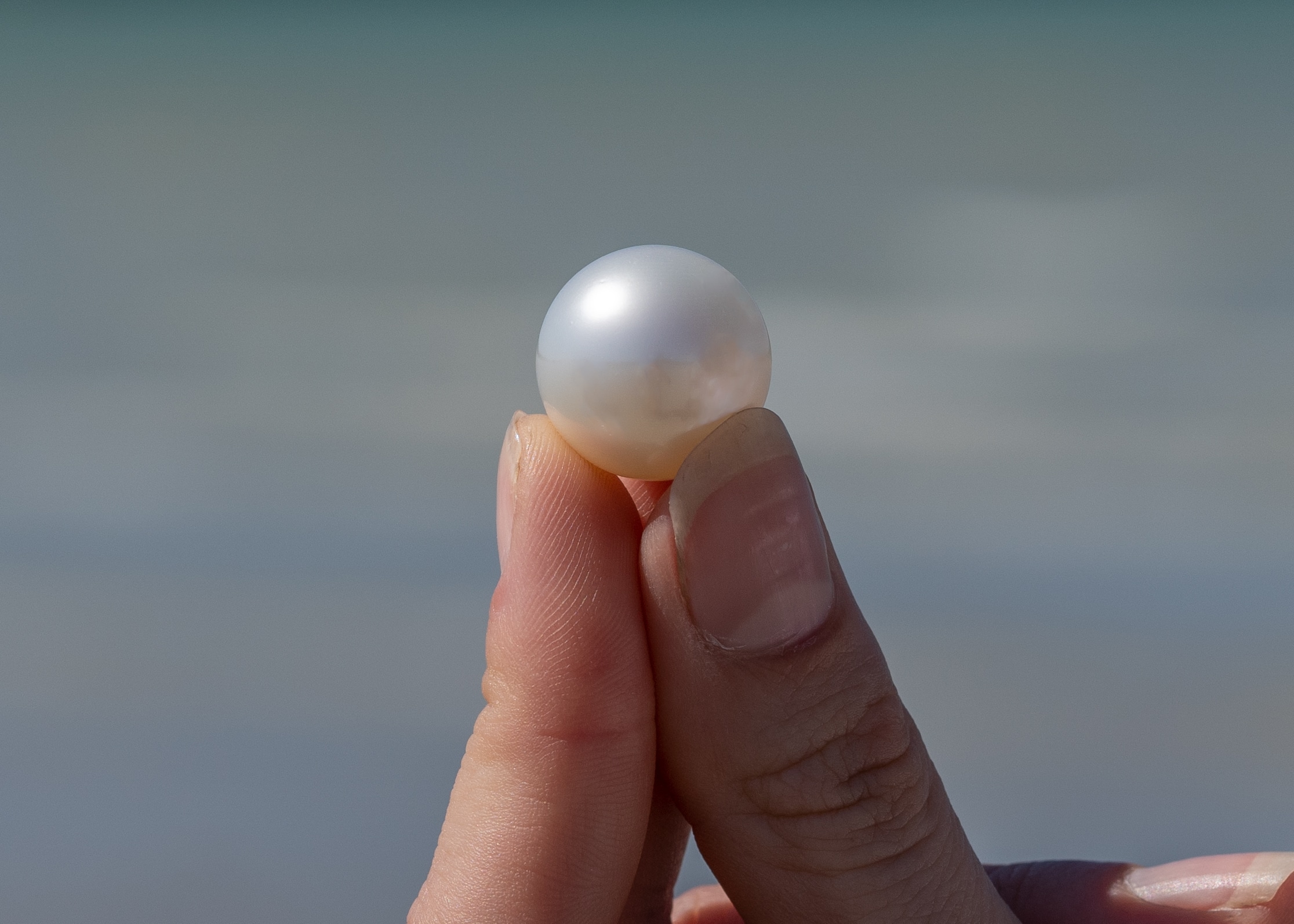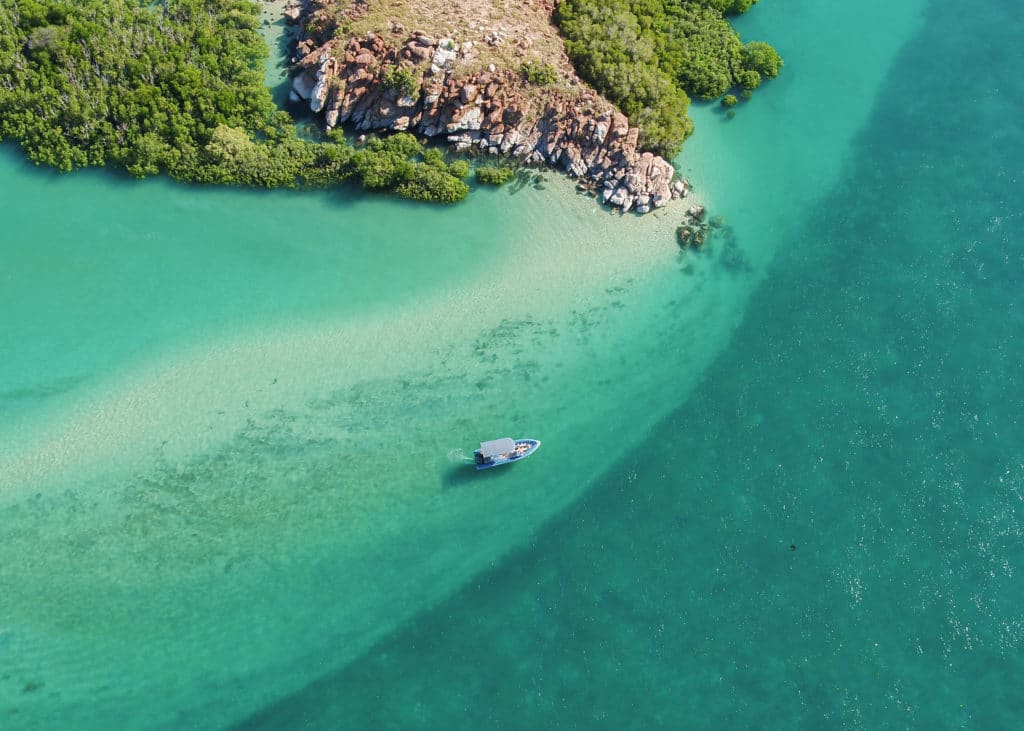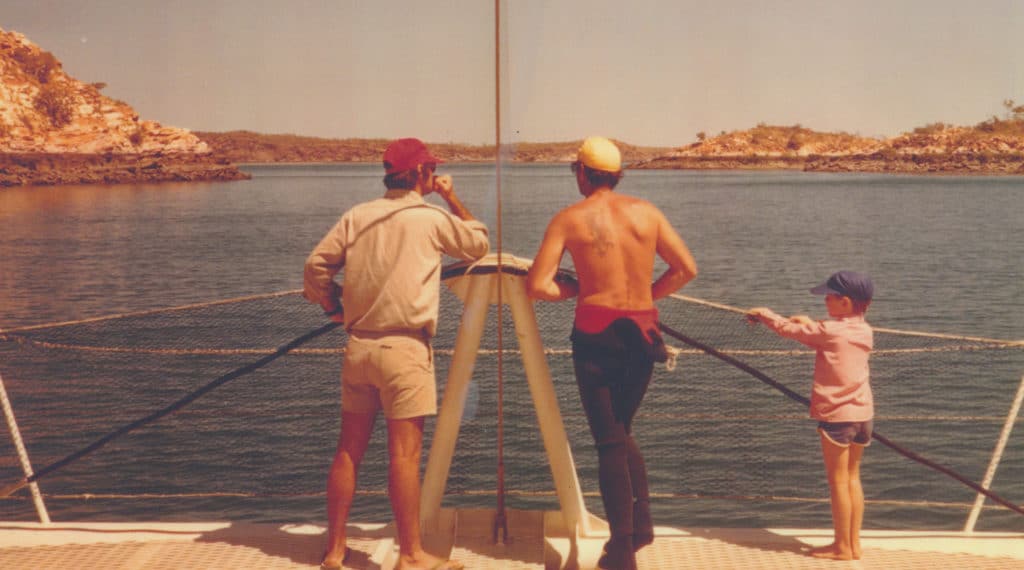Discover the difference between Tahitian pearls and Australian Saltwater pearls, South Sea Pearls and Akoya pearls in our latest blog post. Learn about their unique features as well as our Pearls of Australia’s Saltwater pearls.
What are Tahitian pearls?
The exotic black pearls referred to as Tahitian pearls come from the Pinctada margaritifera or the Black-lip shell. The name of the Tahitian pearl does lead you to think that they originate in Tahiti, but this is not the case! Although Tahiti is the main trading post, they are actually farmed and found in French Polynesia, the Cook Islands, the Micronesian Islands and the Abroholos Islands in Western Australia.
The Cultivation and Growth of Tahitian Pearls
The tropical, warm waters of the South Pacific Ocean are ideal for culturing large saltwater pearls. Tahitian pearls are harvested after an 18 to 24 month growth period. The combination of warmer temperatures and a longer cultivation time for each pearl equates to pearls with very thick nacre, stunning lustre, and incredible colour.
The History of Tahitian Pearls
Tahitian pearls are relatively new within the pearl market, with their popularity only rising in the mid-1900s. The people of Polynesia primarily harvested the black-lipped pearl oysters, and like most mother of pearl shell at some point in history, these shells were used extensively in jewellery, adornment, and decorations. The Tahitian pearls themselves were extremely rare until the practice of pearl cultivation arrived in the 20th century, where it wasn’t until 1972 that they started being exported from French Polynesia to across the world.
What makes Tahitian pearls different from Australian Saltwater pearls?
Unlike other pearl types, Tahitian pearls have a naturally dark colour and are the only naturally dark pearls. If you see Black Akoya pearls and black Freshwater pearls know that they have been dyed and chemically altered!
Although Black-lip shells are farmed in Japan, Thailand, and the Philippines, only those grown in French Polynesia can be called Tahitian pearls.
Tahitian pearl colours
The colour range of the body of Tahitian pearls is quite extensive with a spectrum that begins at light and creamy whites, greys, greens, blues, purples, and deep blacks. These colours are referred to as the primary or body colours of the pearl. Additionally, these pearls display iridescent overtones which are referred to as secondary colours. This is because the Pinctada margaritifera or Black-lip shell has a rainbow-like mantle which is then expressed in the Tahitian pearls.
Primary Colours of Tahitian Pearls
When grading a Tahitian pearl, the most common primary or body colours include – Silvery-white (very rare), pale dove grey, light charcoal grey, medium charcoal grey, medium-dark charcoal grey, dark charcoal grey, very dark charcoal grey, very near true black (rare), jet black (rare).
Overtones of Tahitian Pearls
The most popular and famous overtones are:
Classic peacock: an iridescent mix of green, rose and gold – an extremely popular overtone.
Green: an emerald green or olivine colour – a very common overtone.
Blue-Green: a mixture of blue and green colours.
Aquamarine: This colour is best viewed over a pale dove grey primary colour and is a pale blue/green hue.
Dark Blue: This can range from a midnight-blue to cerulean.
Rose: Rose is a gorgeous accent colour, and can vary from degrees of pink to red.
Cherry: This is a mixture of dark blue and rose and can be best viewed over a very dark primary or body colour.
Silver: This is a soft, shimmery sheen overtone and is very common on Tahitian pearls.
Pistachio: An overtone that is a mixture of greenish-gold.
Bronze: Includes chocolate tones.
Our Saltwater pearls
Although at Pearls of Australia we do not grow Tahitian pearls, we do grow rare and high-quality saltwater pearls in the form of Australian South Sea pearls and Australian Akoya pearls. Our locally and sustainably grown Pinctada maxima (South Sea) pearls are amongst the finest quality pearls grown anywhere in the world.
It is a lesser-known fact that Australia is home to the sub-tropical species of pearl shell known as Pinctada fucata (Akoya), and that a small quantity of Pinctada margaritifera black-lipped pearl shell are cultivated at the Abroholos Islands.
Liddon Pearls from Post Office Island in Western Australia are a family based pearl farm that offer locally grown black pearl jewellery.
The Positive Environmental Impact of Pearl Cultivation
Not only are our pearls rare, pure and completely stunning to look at, but they also happen to be one of the few precious gems on the planet that contain regenerative and restorative qualities for our oceanic environment. This means when you purchase a pearl, you’re not only purchasing one of the rarest and most beautiful gifts of mother nature, but you’re also helping to facilitate the restoration of our pristine Australian waterways.
Discover our Range of Sustainable Pearls
Few collections in the world can boast the purity, rarity, lustre and provenance of our Australian grown pearls. Pairing these visible and invisible qualities together with our elegantly crafted jewellery designs, we create pieces that are treasured for generations. Explore our range of sustainable pearls.
